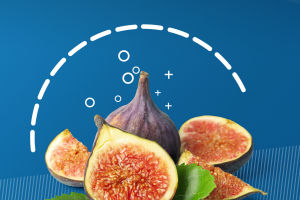Cherry is a sweet European cherry cultivar. Especially a large, thick-skinned cherry produced in the United States, Canada, Chile, and other American countries.
Cherry is the first kind of tree fruit on the market, known as "the first branch of a hundred fruits". Deciduous shrub fruit trees, cherries are dark red, red, and yellow, large diameter, fresh cherries harder, longer stalk.
Cherries are native to the United States, Canada, Chile, and other American countries. Love light, temperature, and humidity. It is suitable for adequate sunlight and the average annual temperature is about 15℃.
Annual rainfall of 700 ~ 1000 mm, soil texture loose, pH6 ~ 7 slightly acidic to neutral or weakly alkaline sandy soil growth.
The bright red color of cherry is not only because of iron ions, but also because it is rich in anthocyanins, proanthocyanidins, lutein and zeaxanthin, and other polyphenolic antioxidants, which can fight cell damage, reduce inflammation, play an antioxidant, anti-aging, prevent chronic diseases, and promote overall health.
Cherries are low in sugar, with a glycemic index of 22, low in calories, and no sodium, so they are a good choice for people with diabetes and high blood pressure.
1. Protect your eyesight. Cherries contain four to five times more vitamin A than grapes, apples, and oranges. Using the computer for a long time in the office or at home can cause myopia.
Cherries are the perfect fruit to protect your eyesight.
2. Beauty. Cherries are rich in nutrition, protein, sugar, phosphorus, carotene, vitamin C, and so on are higher than an apple, or pear.
Often eating cherries can not only beautify beauty, but make the skin rosy, wrinkle, and eliminate spots. Commonly used cherry juice rub face and wrinkles, but also make facial skin rosy, wrinkle and eliminate spots.
3. Replenish blood. Cherries are high in iron and top the list of fruits. Iron is the raw material for synthesizing human hemoglobin and myoglobin.
It plays an important role in human immunity, protein synthesis, and energy metabolism. It is also closely related to brain and neural function and the aging process.
Regular consumption of cherries can supplement the body's demand for iron, promote hemoglobin regeneration, can enhance physical fitness, and brain health.
Cherries and prunus pseudocerasus are very similar, but not identical.
1. Different shapes.
Cherries and prunus pseudocerasus have different shapes of fruit. Cherries are purplish black or dark red when ripe. The grain is larger, the pulp is thicker and the juice is less.
Prunus pseudocerasus turn red when they ripen. Fewer particles, less pulp, and less juice taste hard.
2. Different origin.
Cherries are mainly produced in the United States, Canada, Chile, and other American countries. Prunus pseudocerasus are mainly grown in Asia.
3. Different fruits.
Cherries are seasonal fruits, usually ripening in June and being picked for only two months. Prunus pseudocerasus ripen in May and finish picking in July.


